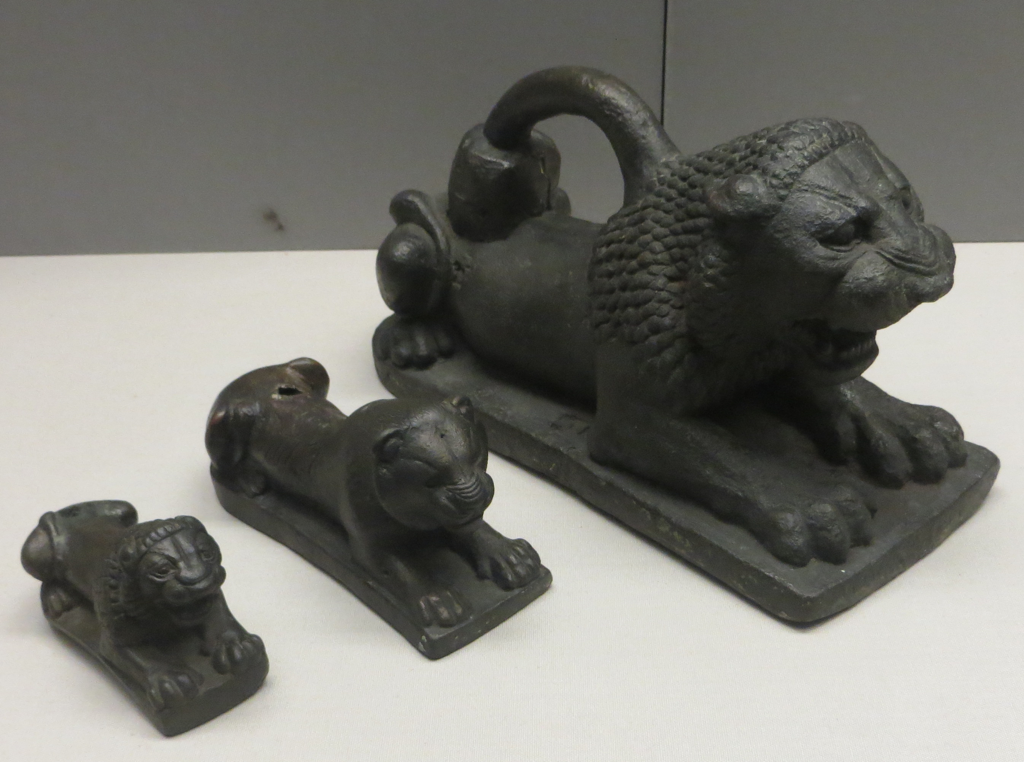The Assyrian lion weights are a remarkable testament to the advanced craftsmanship and trade practices of the ancient Assyrian civilization. These small bronze sculptures, shaped like lions, served as a standard measure for commodities and were integral to the economic system of Assyria. They reflect the society’s high regard for accuracy in trade and the symbolic importance of the lion in Assyrian culture. The weights are not only artifacts of commercial significance but also offer insights into the artistic and cultural values of the time.
Get your dose of History via Email
Historical Background of Assyrian Lion Weights
Assyrian lion weights date back to the Neo-Assyrian period, roughly spanning from 911 to 609 BCE. Archaeologists discovered these weights during excavations of ancient Assyrian sites. The British Museum holds a significant collection, thanks to the efforts of Austen Henry Layard in the 19th century. Layard unearthed many artifacts at Nimrud, one of the ancient capitals of Assyria. The Assyrian Empire, known for its powerful rulers and military prowess, also had a complex economy. These weights played a crucial role in maintaining fair trade practices across the empire.
The Assyrians created these weights from bronze, a testament to their metalworking skills. The lion, a symbol of royal authority and divine protection, was a fitting emblem for objects that upheld the integrity of commerce. The weights vary in size, indicating different standards of measurement. They were likely used in marketplaces and administrative centers, ensuring consistency in trade transactions.
Over time, the Assyrian Empire expanded, and with it, the use of lion weights spread. They became a common sight in regions under Assyrian control. The weights not only facilitated trade but also served as a symbol of the empire’s reach and organizational prowess. The lion motif on the weights would have been instantly recognizable, reinforcing the presence of Assyrian authority in daily economic life.
While the Assyrian Empire eventually fell to a coalition of Babylonians and Medes, the lion weights remained. They were found in contexts that suggest continued use beyond the empire’s demise. This indicates the lasting impact of Assyrian administrative systems on subsequent cultures. The weights are a tangible link to the empire’s legacy in the region.
Historically, the Assyrian lion weights are significant for their dual role as functional objects and political symbols. They exemplify the intersection of economy, art, and empire in the ancient world. The discovery of these weights has provided historians and archaeologists with valuable information about the trade practices and cultural values of one of history’s most influential civilizations.
About Assyrian Lion Weights
Assyrian lion weights are small bronze sculptures, meticulously crafted to represent the form of a crouching or seated lion. The level of detail in these weights is remarkable, with features such as manes, muscles, and facial expressions rendered with care. This attention to detail reflects the high value the Assyrians placed on artistry and symbolism.
The weights were cast using the lost-wax method, a sophisticated technique that involves creating a wax model of the object, encasing it in clay, and then melting the wax away to leave a hollow mold. Bronze was then poured into the mold to create the final weight. This process allowed for the production of intricate and uniform objects, essential for their use in trade.
The lion weights varied in size, correlating to different units of measurement. The smallest weights were used for lighter goods, while larger ones corresponded to heavier commodities. The exact weight standards are still a subject of study, but they were undoubtedly integral to the Assyrian system of weights and measures.
Aside from their practical use, the lion weights also had an aesthetic function. They were often found in administrative buildings and palaces, suggesting that they were on display as symbols of royal authority and economic control. The lion motif was a powerful symbol in Assyria, associated with the king and the gods, and its use on weights reinforced the state’s role in regulating commerce.
The craftsmanship of the Assyrian lion weights reveals a civilization that valued precision, order, and beauty. These objects are a testament to the advanced metalworking skills of the Assyrians and their sophisticated approach to trade and administration. Today, they are prized by museums and collectors for their historical significance and artistic merit.
Theories and Interpretations
Several theories surround the Assyrian lion weights, particularly regarding their use and symbolism. Scholars believe that the weights played a key role in the standardization of trade, which was essential for the Assyrian economy. The uniformity of the weights suggests a centralized system of control and regulation.
The lion motif on the weights is subject to interpretation. Some scholars argue that it symbolized royal authority and divine protection, reinforcing the power of the Assyrian state. Others suggest that the lion represented Ishtar, the Assyrian goddess of war and fertility, linking the weights to religious practices.
Mysteries also surround the exact weight standards the Assyrians used. While the relative sizes of the weights suggest a proportional system, the precise values and their correlation to quantities of goods are not fully understood. Ongoing research and comparisons with other ancient weight systems aim to shed light on this aspect.
Historical records from Assyria mention weights and measures, but direct references to the lion weights are scarce. This has led to some speculation about their distribution and use. Were they common in everyday transactions, or reserved for more significant trade dealings? This question remains open to debate.
Dating of the weights has been carried out primarily through typological analysis and context within archaeological layers. However, the exact chronology of the weights’ production and use is still being refined. As more weights are discovered and analyzed, a clearer picture of their role in Assyrian society emerges.
At a glance
Country: Ancient Assyria
Civilization: Assyrian Empire
Age: Neo-Assyrian period, approximately 911-609 BCE
Conclusion and Sources
Reputable sources used in the creation of this article include:

